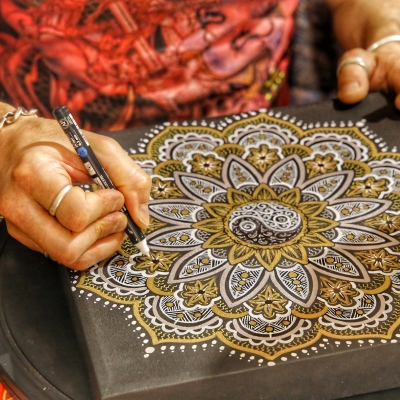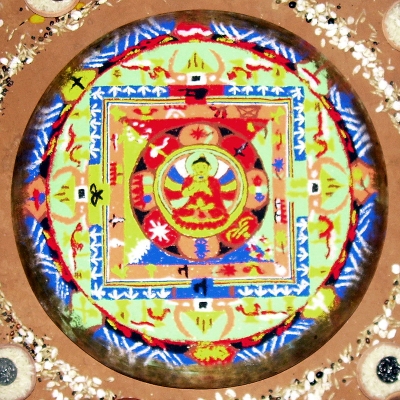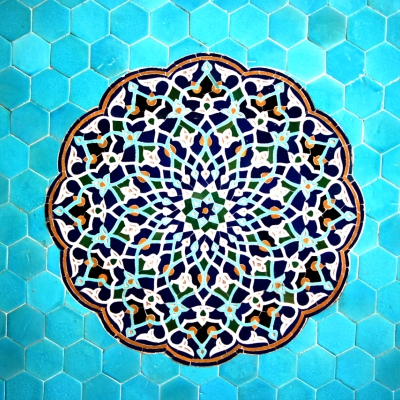
Circular artwork (Mandalas) has been used for various purposes throughout history, including: religious, spiritual, artistic and even psychological purposes… so how do images affect us?
The term ‘mandala’ comes from the ancient Indian language of Sanskrit and means ‘circle’.
Mandalas: Brief Historical Overview
1. Ancient India Mandalas:
The concept of mandalas have their roots in ancient India, where they were initially used in Hindu and Buddhist traditions as sacred symbols and spiritual tools. In Hinduism, often representing the Universe and cosmic order.
The first image of a mandala appears in the Hindu text known as the Rig Veda (1500 – 500 BCE).
2.Tibetan Buddhism Mandalas:

Sand Mandalas have played a prominent role in Tibetan Buddhism for thousands of years… and they are still created today as intricate and colorful sand paintings during religious ceremonies. Then ritually dismantled to symbolize the impermanence of all things.
These Tibetan mandalas require great skill and precision to create. Often created by a team of dedicated monks as aids for meditation and symbols of enlightenment.
3. Native American Culture:
Native American tribes, such as the Navajo and Hopi, have also used circular designs reminiscent of mandalas in their art and religious ceremonies.
Circular sand paintings play a central role in Navajo healing ceremonies. Intricate creations depicting spiritual stories and prayers, the circular form representing the cyclical nature of life, the interconnectedness of all things, and the healing power of the universe.
Hopi iconography features circles prominently with the Sunface, a central circular figure. The circles represent the cardinal directions, vital for Hopi ceremonies and maintaining harmony. Again symbolizing the interconnectedness of all living things and the cyclical nature of life.
4. Christian Window Art:

In Christian art and architecture, the rose window found in cathedrals and churches is also a form of mandala.
The rose window comes from the Roman Oculus (Latin, ‘oculus’ meaning ‘eye’), a celestial eye looking down from the heavens.
These intricate circular stained glass windows inspire focus and contemplation… the light filtering through the windows creates a sense of awe and mystery, fostering a contemplative atmosphere for pray.
5. Islamic Artwork:

Islamic art frequently incorporates geometric patterns and designs that resemble mandalas. These patterns can be found in architecture, textiles and manuscripts. Serving both as beautiful decorative features and symbolic significance.
Using geometric patterns these intricate designs are often interlocking and radiating outward… symbolizing the unity and infinity of creation.
Mandala Psychology: Carl Jung
Swiss psychiatrist Carl Jung introduced the concept of the mandala in psychology in the early 20th century. Seeing them as ‘a representations of the self’ he believed that creating or meditating on mandalas would lead to self-discovery and psychological healing. Mandala Therapy became a tool for introspection and healing in the field of psychology.
“Only gradually did I discover what the mandala really is, the Self, the wholeness of the personality, which if all goes well is harmonious.” Carl Jung
Contemporary Art and Therapy:
Mandalas continue to be popular in art therapy many people creating them as a means of a meditative, stress-relief, relaxation, self-expression, and personal growth.
Used meditation, visualization and healing they have energetic and spiritual significance… with different shapes and colors having specific properties and meanings.
But can they take you really Deep? Mandalas…


Pingback: Visionary Experience Pt 1: Qualities, Characteristics & Methods
Pingback: Visionary Experience: Pt2... The Geometric Phase